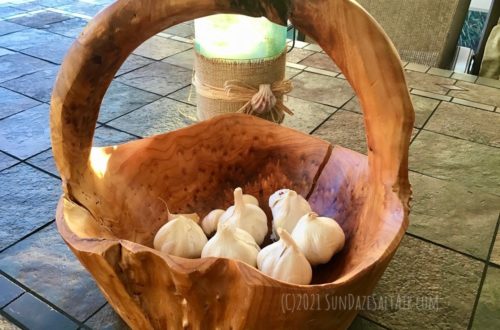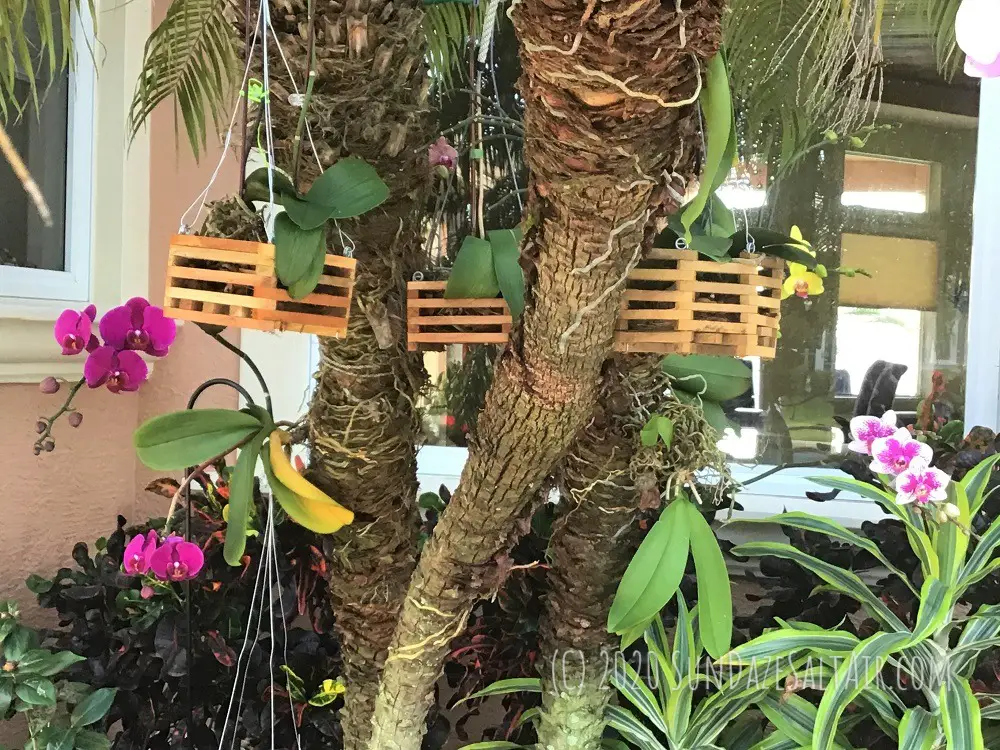
How To Grow Orchids In Wood Baskets (With Pictures)
Grow Orchids In Hanging Baskets: How & Why You Should Grow Your Orchids In Hanging Baskets Rather Than Pots
Growing orchids in slat wood baskets is one of the best ways to grow and display this spectacular specimen of the plant world. First, cultivating orchids in hanging open-air baskets is an easy way to display your orchid's beauty, showcasing its gorgeous cascade of flowers, whether hanging on your lanai, from a tree, or near a bright window. Even more importantly though, growing orchids in baskets closely mimics the way orchids grow in the wild, making caring for them easier than when growing orchids pot-bound. In this post, I discuss why and how to grow your orchids in hanging baskets to maximize their health and blooming potential.
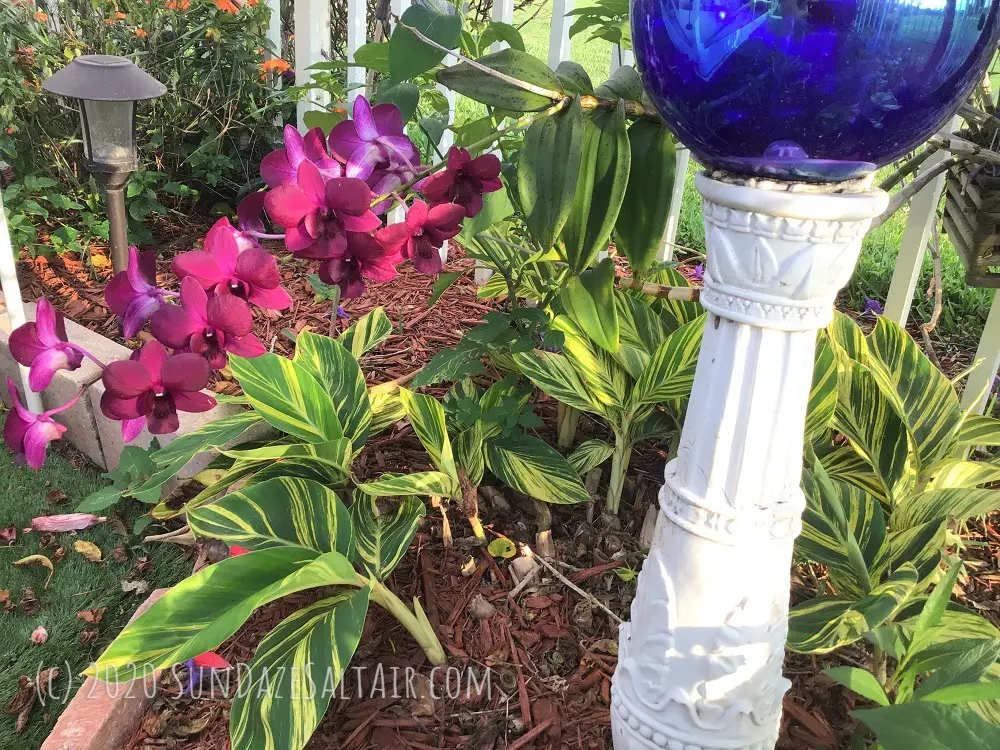
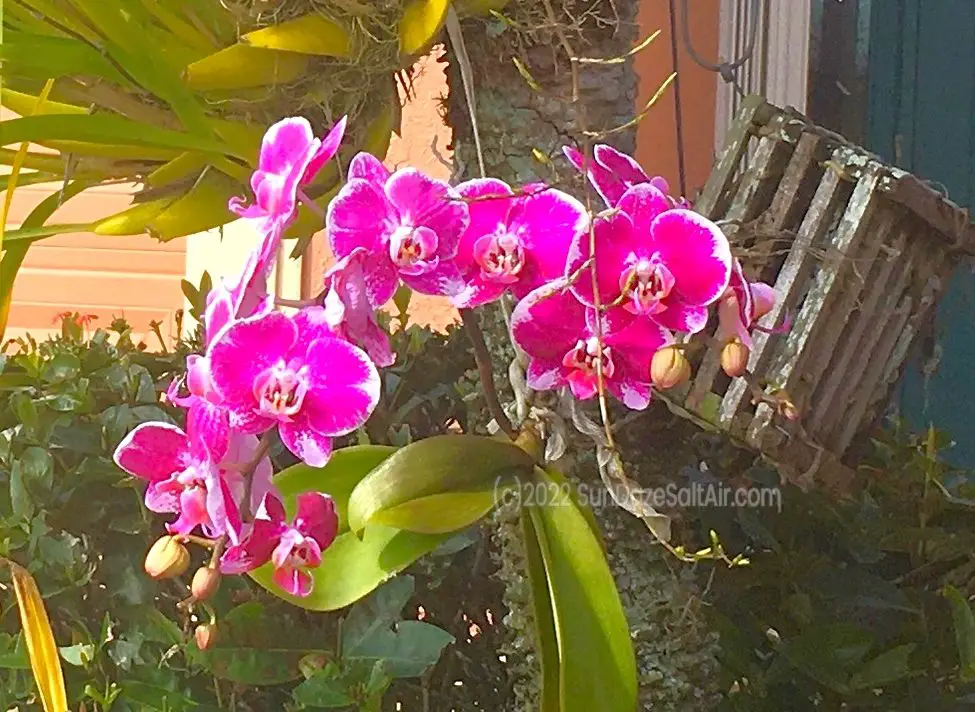
Why Grow Orchids In Baskets Rather Than Pots? Better Orchid Health By Simulating How Orchids Grow In The Wild
There are between 25,000 to 30,000 species of known orchids in the world, but about 10,000 of these can be found in the tropics, including many of our most well-known and loved orchids such as Phalaenopsis, Dendrobium, and Vanda. In addition, about 70% of all orchids are considered "epiphytes" which means, under the ideal conditions of their native habitat, orchids grow and thrive attached to objects, such as rocks and trees, suspended from branches in the sultry, humid air of the rain forest canopy. That's right, most orchids grow and thrive without any soil whatsoever, unlike most common flowering plants. And how exactly do they do this?
Why Grow Orchids In Baskets Rather Than Pots? Orchids Thrive With Air Circulation
Orchid roots thrive with continual air circulation. The orchid's unique epiphytic ability to grow "soil-less" is due to the fact that they possess specialized aerial roots which absorb all the nutrients and water the plant needs from the environment alone; no soil is required. This is made possible by the fact that orchids in the wild have exposed, well-ventilated roots. Planting and growing orchids in open slat wooden or plastic baskets mimics these "wild" growing conditions, allowing well-ventilated orchid air roots to take full advantage of the hydration and nutrients their surroundings have to offer.
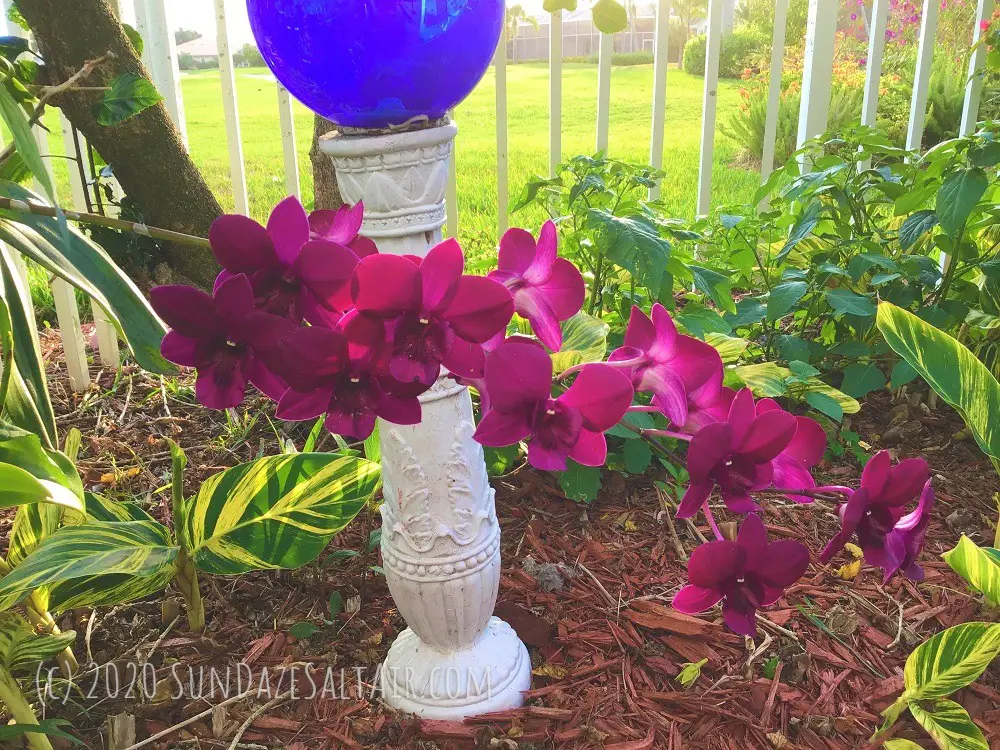
Pot-Bound Orchids Vs. Exposed Orchids In Hanging Baskets
Of course, you often hear it said that orchids love to be "pot-bound" so how does this reconcile with their preference for ventilation? It comes down to the fact that orchids cultivated at home are often subject to different living conditions than those grown in the wild, unless you live in a tropical rain forest. This explains why orchids cultivated in dry living conditions are often kept pot-bound. In environments with low moisture and humidity, keeping your orchids pot-bound does enable them to get their moisture needs met from constant close contact with their potting medium. However, we all know this very moist arrangement can be a double-edged sword...
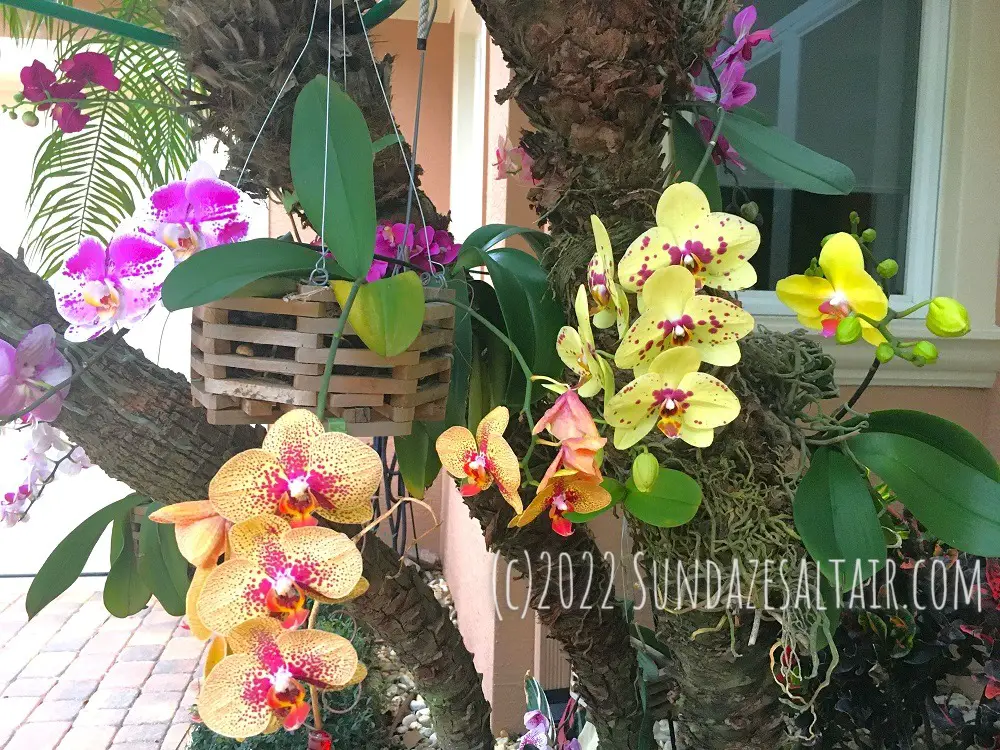

********
Why Grow Orchids In Baskets Rather Than Pots? Ease Of Care, Less Risk Of Root Rot
The Advantage Of Growing Orchids In Pots, Moisture, Can Also Be Its Downfall
As all orchid growers have learned the hard way, sitting in damp potting medium with little ventilation can take a toll on your orchid over the long-term. Especially if you don't take the time to regularly inspect your orchid's potting mix for signs of decay, or regularly refresh and repot it. Growing orchids in inadequately ventilated pots in degrading potting mix can cause root rot, dehydration, and even, death. Repotting your orchids is one way to prevent root rot, but it can requires extra vigilance and more work for you.
Hanging Baskets Are Ideal For Drought-Tolerant Orchids
Not to mention, certain types of orchids, such as Dendrobiums and Cattleyas, are more drought-tolerant, and actually thrive with less moisture, making such orchids excellent candidates for planting in hanging baskets.
Hanging Baskets Also Benefit Moisture-Loving Orchids
Although the well-ventilated arrangement does mean your orchid's roots will dry out faster, moisture-loving orchids such as Vandas can still benefit from growing in an open-air hanging basket. How so? Growing in hanging baskets actually makes watering a breeze to do...
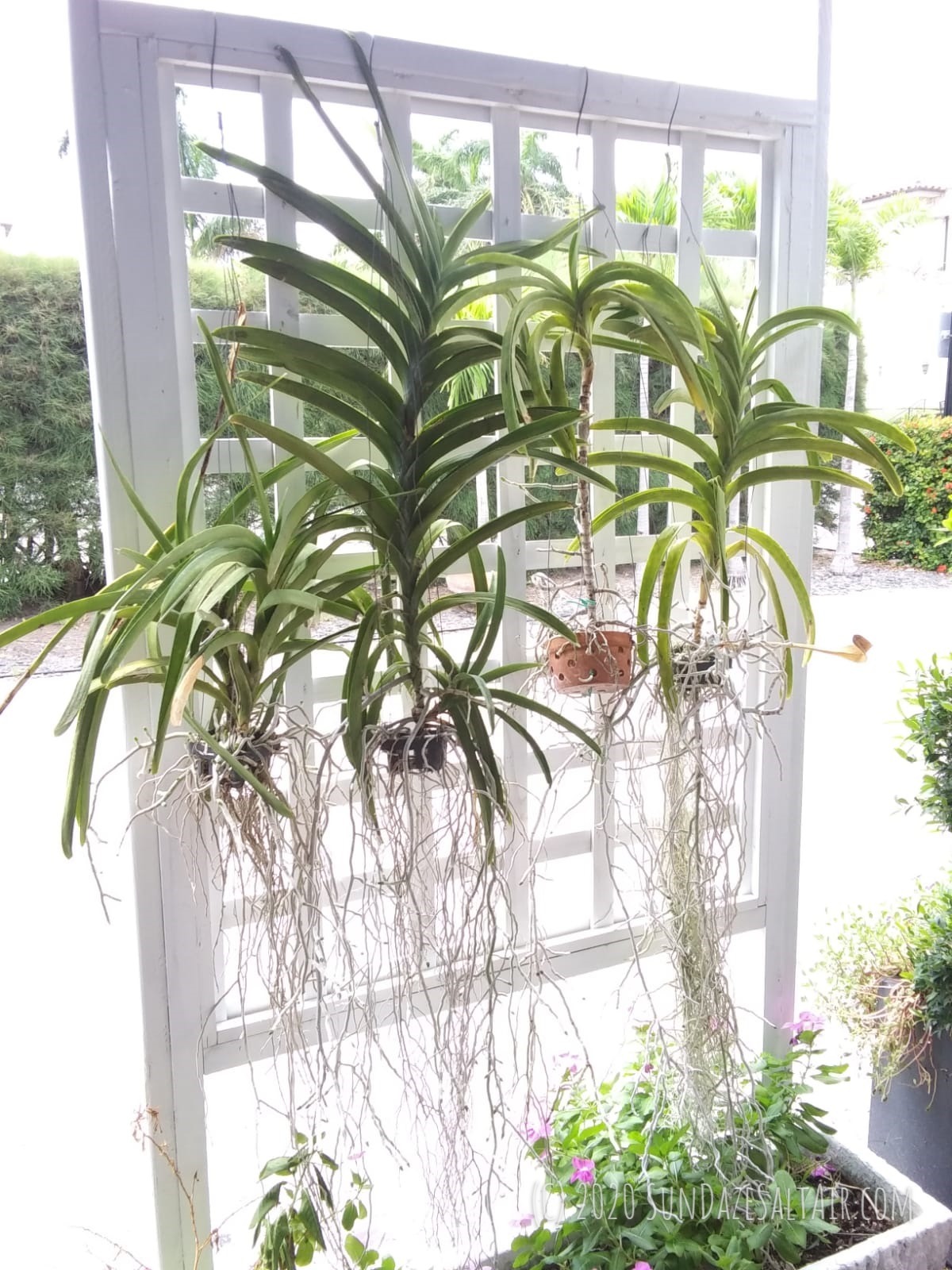
TIP! Want More on Vandas? Check Out...
**Find out how to easily satisfy your Vanda orchid's hydration needs in this post on how to water a Vanda for maximum blooming potential...
**Vanda orchid won't bloom? Find out how to get your Vanda orchid to bloom in a few easy steps here...
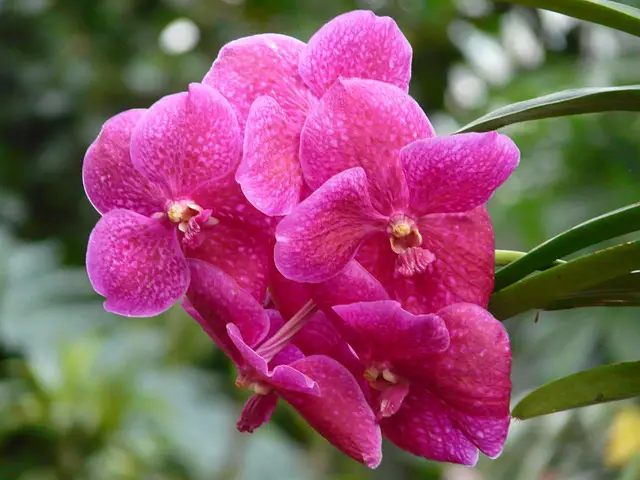
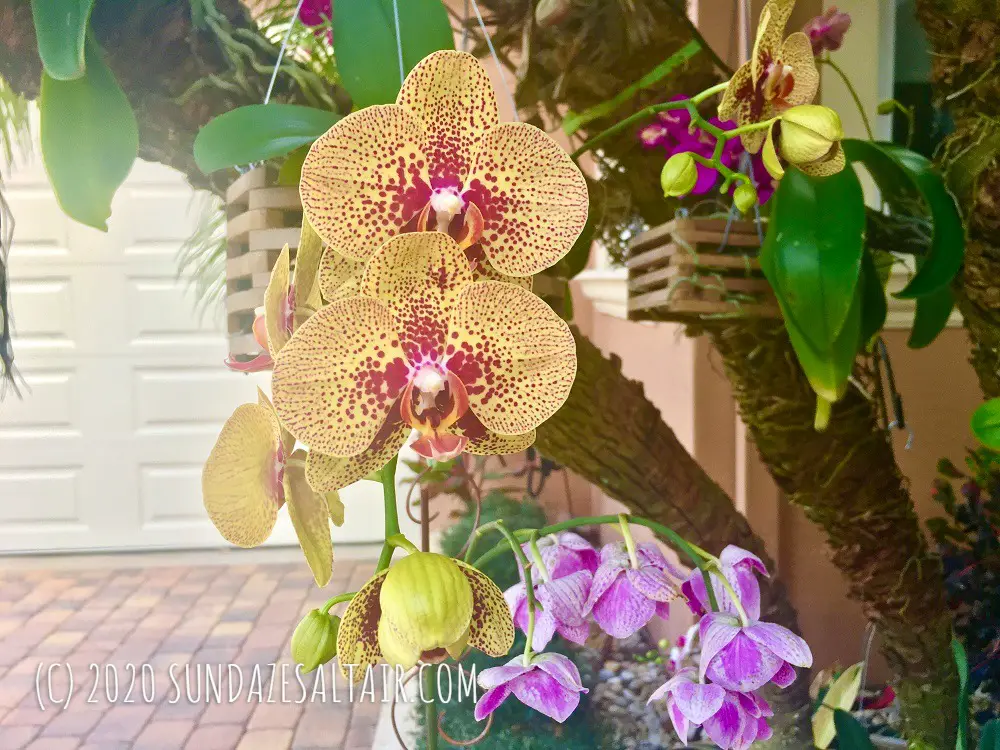
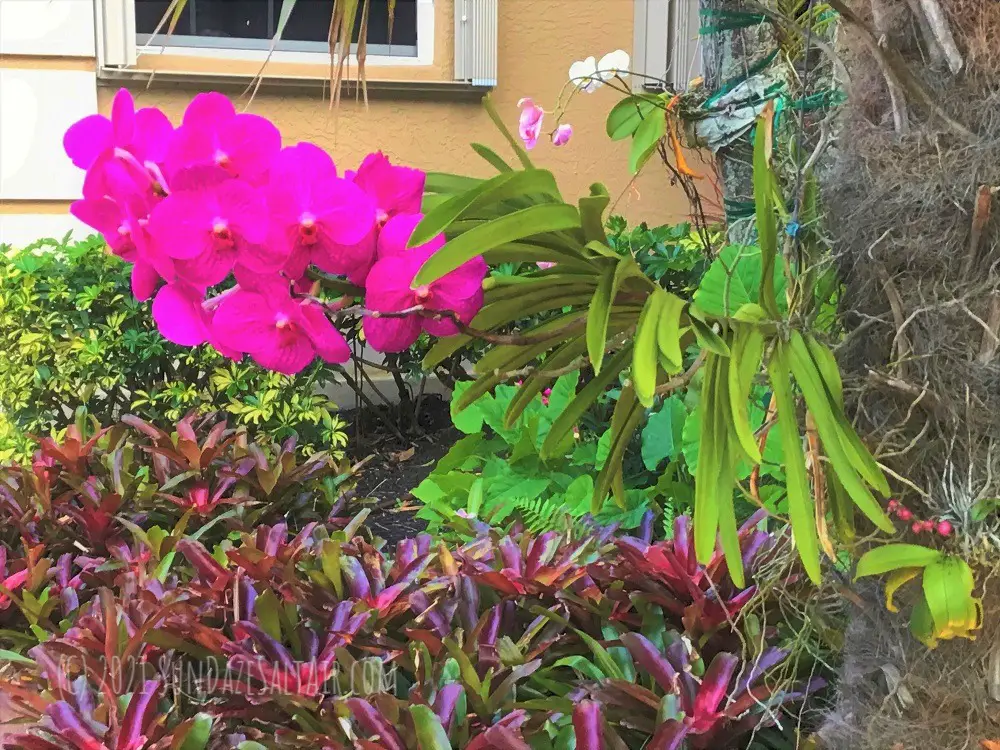
Hanging Baskets Provide Constant Air Circulation Mitigating The Chance Of Rot
While you will still need to monitor the moisture-content of the sphagnum moss or bark potting medium lining your orchid's hanging baskets, it's not as hard to do with open slat baskets. Baskets make it easy to refresh old, degraded moss or bark as needed. Most importantly, providing your orchids with constant air ventilation helps keep root rot at bay. Plus, ventilation is a "breeze" when you can easily move your orchid baskets outdoors in warm, humid weather to escape dry indoor air.
Bottom-line: Potted Orchids May Provide More Moisture But They Also Require More Maintenance Than Orchids In Baskets
With potted orchids, even the most dedicated orchid grower can unwittingly expose their plants to toxic potting conditions. Between acidic potting medium and pots without proper drainage, orchids don't receive the ventilation that get in the wild. Plus, many commercially available orchids are sold in pots without any air holes or ventilation whatsoever. While not noticed in the short-term as the orchid initially thrives in moist conditions, by the time you do notice, it may too late to recover lost roots.
********
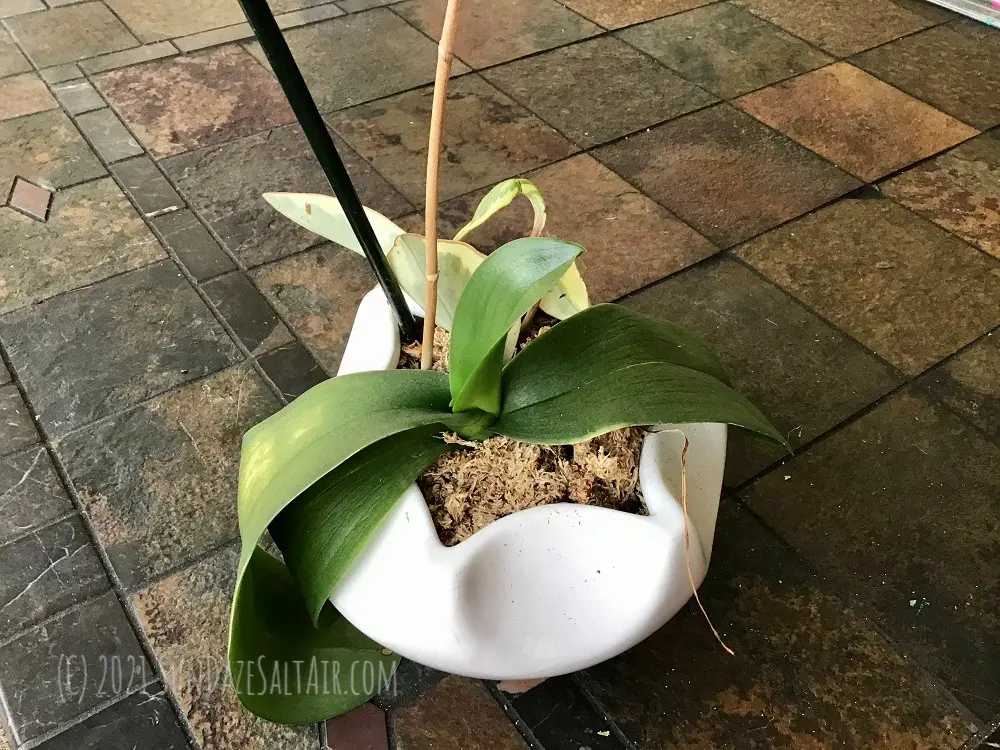
********
How To Grow Orchids In Hanging Baskets? Simulate Their Native Tropical Environment
So, how do you best simulate the ideal conditions of your orchid's native tropical habitat so both you and your orchid can enjoy all the benefits of growing orchids in hanging baskets? Here are a few tips.
1. Hang Your Orchid Baskets Outdoors If You Live In A Warm, Humid Climate
Obviously, if you already live in a warm place with high humidity, you already have the ideal conditions that many orchids love. Take advantage of your location by planting and growing some common tropical orchids in hanging baskets outside around your property.
2. Grow Orchids In Hanging Baskets In Drier Climates to Mimic A Humid Tropical Climate
When growing in hanging baskets in dry indoor air, as much as the orchid will love the ventilation, the partially exposed root system of the orchid will run the risk of drying out. Check the moss/potting mix for dryness and do more frequent watering and misting of your orchid's roots as needed to combat dryness. You can also use a fan in the room or open windows to encourage air circulation. When weather permits, hang your basket outside whenever possible.
To conserve almost as much moisture as pots, you may want to include sphagnum moss as part of your potting mix for its ability to retain moisture. While I don't use sphagnum moss as much in my humid location, a dry climate combined with the greater air flow a ventilated basket receives, will ultimately be drying to your orchid's roots. Do be sure to monitor sphagnum moss closely since too much moisture will damage roots if not allowed to dry between watering.
Bottom-line:
While these steps cannot exactly replicate your orchids' native growing conditions, as long as you monitor and water your basket-bound orchid's roots frequently, you should be able to successfully grow your orchids in baskets even in drier locations.
********
When Should You Not Grow Orchids In Hanging Baskets?
As stated above, if you plan to grow your orchids in an environment that happens to be very dry and, for whatever reason, you can't commit to tending to your orchid's water requirements, you may want to stick to growing orchids in pots.
When Should You Plant Orchids In Hanging Baskets?
Plant your orchids in hanging baskets only after all its flowers have already fallen off, so as not to disturb a blooming period with stress.
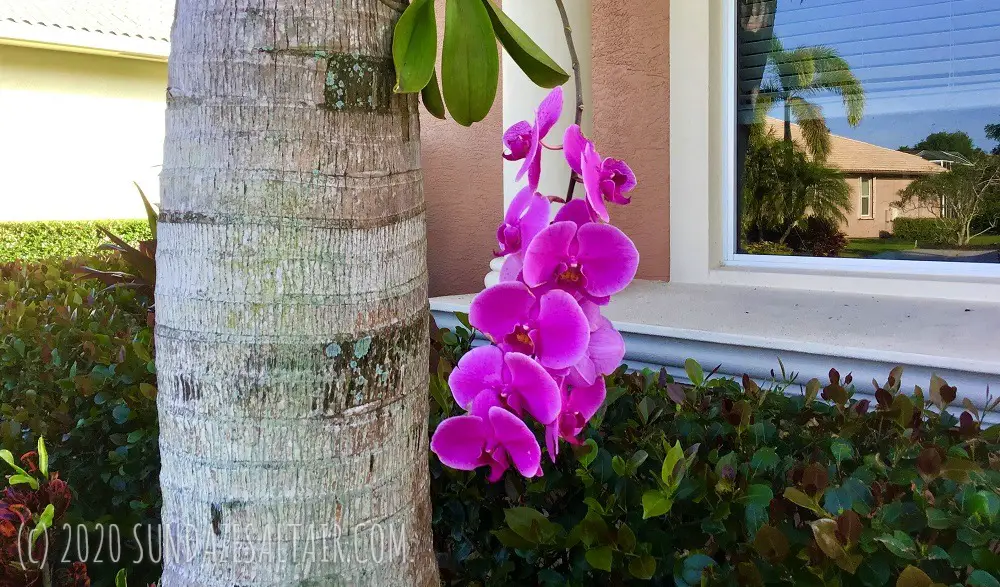
********
Materials You Need / What To Buy To Grow Orchids In Hanging Baskets
1. Orchid baskets -- I chose wood baskets as they offer the maximum ventilation orchid air roots crave. They also come in a variety of shapes and sizes, including 6 inch and 8 inch baskets. Orchids prefer not to be too tight or too loose so consider the size of the orchid when choosing your basket. A 6 inch basket should be large enough to comfortably accommodate an average sized orchid.
2. Wire hangers -- Since orchid baskets are usually sold separately, be sure to pick up some wire hangers to hang your basket(s).
3. Fresh Sphagnum moss, fir bark, & perlite - Sphagnum moss is good for the bottom layer to line your orchid baskets. Sphagnum moss can also provide moisture for indoor orchids in hanging baskets, but monitor it carefully as discussed above. Outdoors with rain and humidity, use sphagnum moss only as the liner with coarse bark on top for superior drainage. Especially species that like to dry between watering, such as Dendrobiums, Cattleyas, and Oncidium, chunky, coarse potting media is essential. This media should include a combination of orchid fir bark, charcoal, and some perlite for optimal drainage on top of the sphagnum moss "liner."
4. Scissors or pruning shears if you need to prune any dead stems.
5. A bottle of 3% hydrogen peroxide for sterilizing shears and orchid wounds/cuts.
6. A spray bottle filled with water to moisten roots and potting medium.
7. A towel on your work space for cuttings.
8. Stakes to support your orchid.
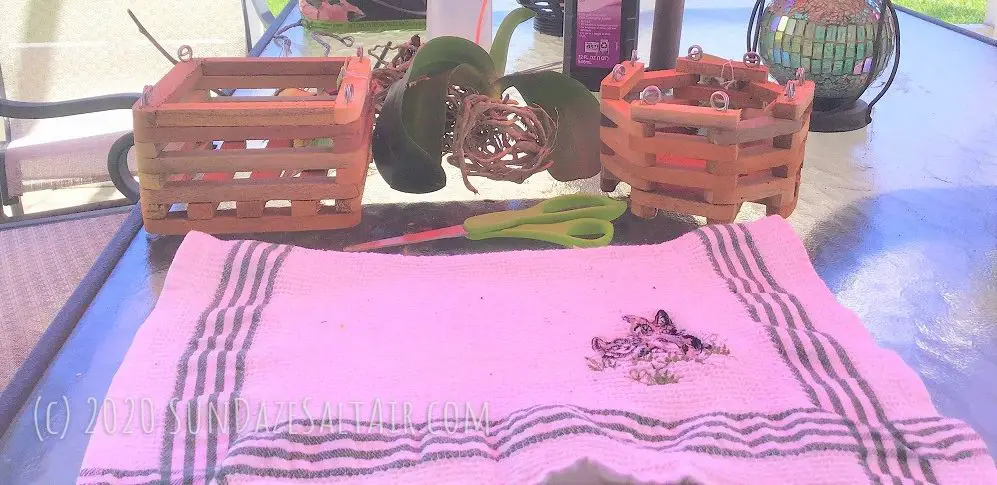
********
How To Grow Orchids In Hanging Baskets: Step-By-Step
Prep
- Start with a clean, freshly washed wood orchid basket with open air slats. You can hose the basket down or clean it in a sink, just be sure no soap residue remains. Line the bottom of your orchid basket with a layer of fresh sphagnum moss that was thoroughly moistened. This layer should also prevent any additional potting media from falling through the slats.
- Prepare the orchid you plan to house in the basket by thoroughly soaking its root system with water. A well-hydrated plant is always easier to work with, and will help you dislodge any old potting medium and untangle any roots without harming them. It also lets you see which orchid roots are healthy.
- Gently tease out any old potting material from your orchid to remove as much as possible from the root system. It is always best to start fresh, as any lingering, old potting debris can harbor bacteria harmful to your orchid.
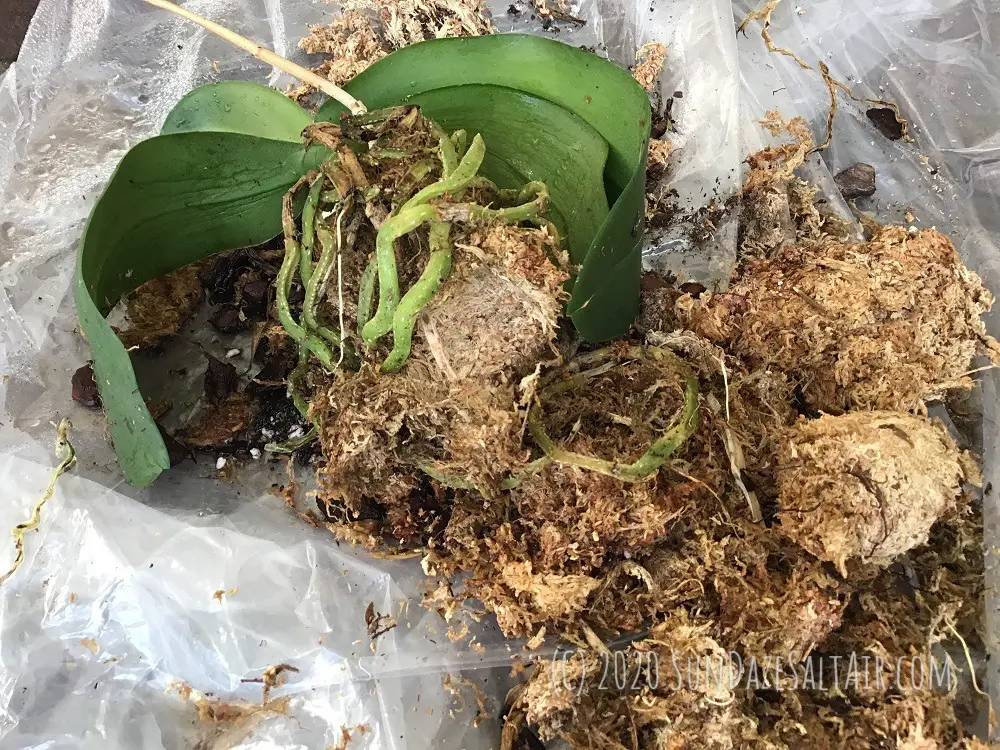
Prune & Trim
- Now is a great time to remove any dead roots, leaves, and spent flower spikes using sanitized shears. Usually anything truly dead will fall off but, if you have to cut anything, use a basic 3% hydrogen peroxide solution to prevent bacteria transfer. I discuss more about the importance of only trimming dead tissue and the entire process of pruning an orchid in this post. You can also divide your plant now for propagation purposes if you are so inclined.
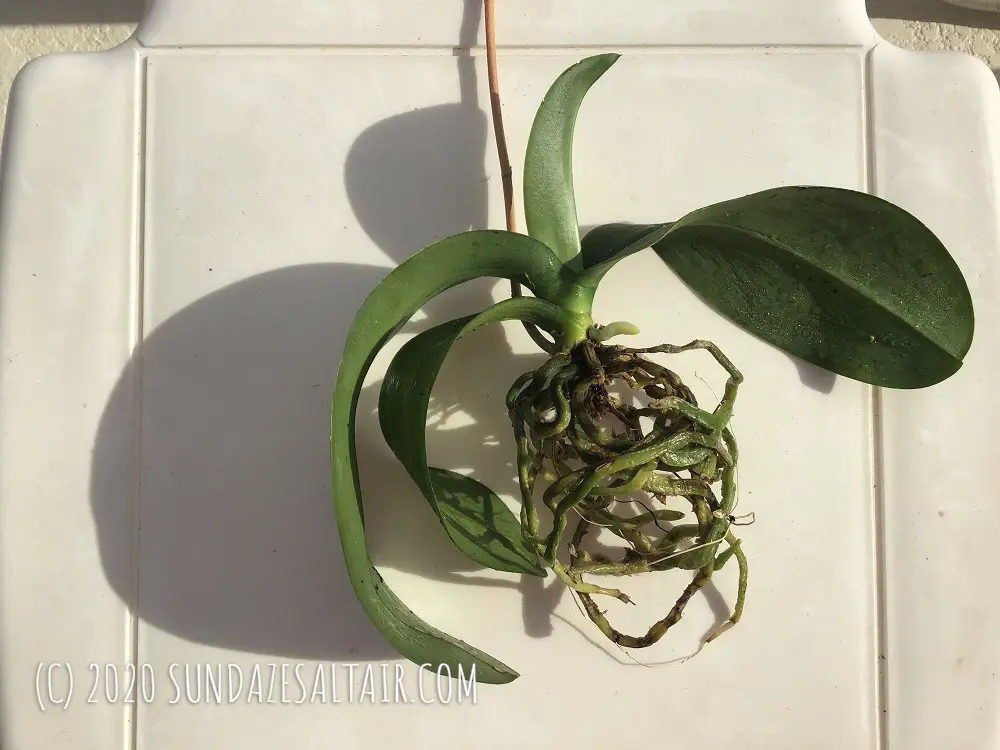
Position Your Orchid
- To best position your orchid, it is helpful to know what type of orchid you have. You can find more information on the two types of orchids and how it affects their growth and potting in this post. Basically, monopodial orchids, such as Phalaenopsis, Vanda, and Sarcochilus, grow upward from a single stem, getting taller, instead of wider. Under ideal conditions, they can reach pretty great heights. Therefore, you will want to position the root ball of your monopodial orchids in the center of the orchid basket for stability and below the rim. Add a stake near the root ball and any flower spike, without damaging it, for more support. Fill around the orchid with quick-draining potting medium such as fir bark orchid potting mix, packing it in to fill the space so the root ball is supported. Leave air roots uncovered.
- For horizontally growing sympodial orchids like Dendrobiums, Cattleyas, and Oncidium, place the pseudobulb against the side and below the rim of the orchid basket. Place a stake for stability following the instructions above and again fill the empty space around it with orchid bark.
- Water your orchid's potting medium to check that there is adequate drainage. Between the slat basket, the sphagnum moss liner and the large-sized, chunky bark potting medium, excess water should drain out quickly and easily through the basket without obstruction.
- Attach the wire hangers to the basket and hang and display your orchid so it receives bright but indirect sunlight.
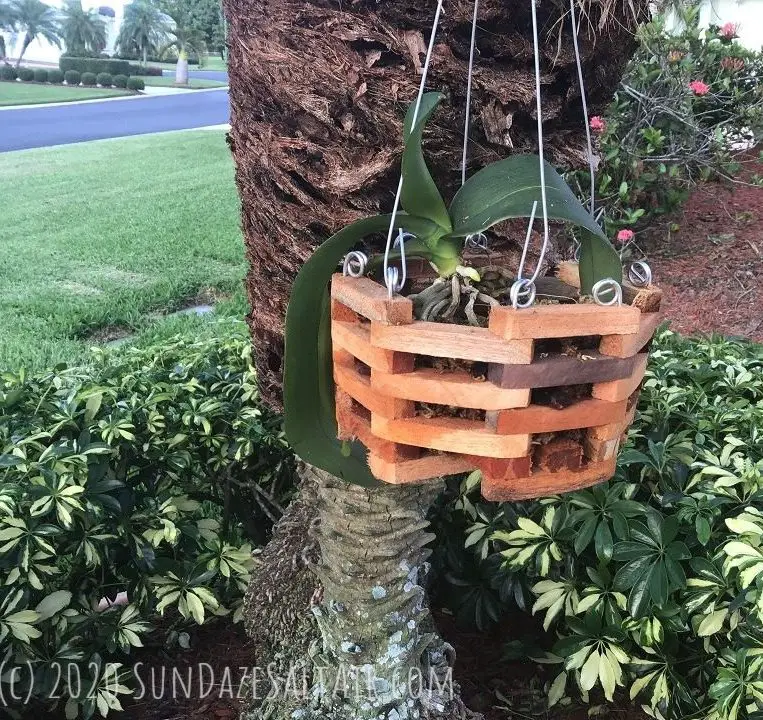
********
How Do I Know If My Orchid In A Hanging Basket Is Getting Enough Light?
A good way to gauge whether your orchid is getting sufficient sunlight is to look at the color of your orchid's leaves. An orchid receiving sufficient sunlight displays leaves that are a light, grassy green in color, even with slight yellow undertones. In contrast, dark green colored leaves indicate your orchid could benefit from more bright but indirect sunlight exposure.
Conclusion: Grow Orchids In Hanging Baskets For An Orchid That Is Both Beautiful & Healthy For Years To Come
While cultivating orchids at home and in climates dissimilar from their native habitat poses challenges, growing them in baskets can provide one thing orchids crave-- continuous air ventilation for their roots. Not to mention, baskets allow you to showcase your orchid's beauty in a unique and eye-catching way.
Bookmark and share this page for future reference. As long as you follow these orchid basket tips and tricks, you should have stunning orchid displays that make your front garden the envy of friends and neighbors... Now, start growing your beautiful hanging orchid garden...

********
Do you grow your orchids in hanging baskets? Share your tips down below.


You May Also Like

How To Clean Your Windows Without Streaks – Secrets To Streak-Free Windows With Minimal Effort
July 17, 2021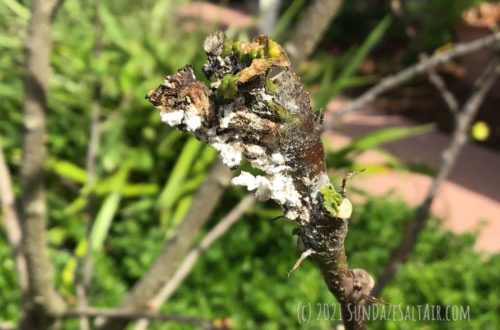
What Is This White Fuzz On My Hibiscus? How To Rid A Hibiscus Of Mealybugs
October 20, 2021